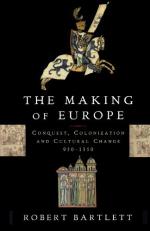|
This section contains 569 words (approx. 2 pages at 300 words per page) |

|
John Stuart Mill (1803-1873) and Harriet Taylor (1807-1858) married in 1851 after a long relationship, during part of which Taylor was married to another man. Both Mill and Taylor campaigned actively for the equality of women, especially in the realms of marriage and divorce. Taylor's argument for allowing divorce reveals how the issue touched many aspects of male and female relationships.
Women are educated for one single object, to gain their living by marrying—(some poor souls get it without churchgoing. It's the same way—they do not seem to be a bit worse than their honored sisters). To be married is the object of their existence and that object being gained they do really cease to exist as to anything worth calling life or any useful purpose. One observes very few marriages where there is any real...
|
This section contains 569 words (approx. 2 pages at 300 words per page) |

|




